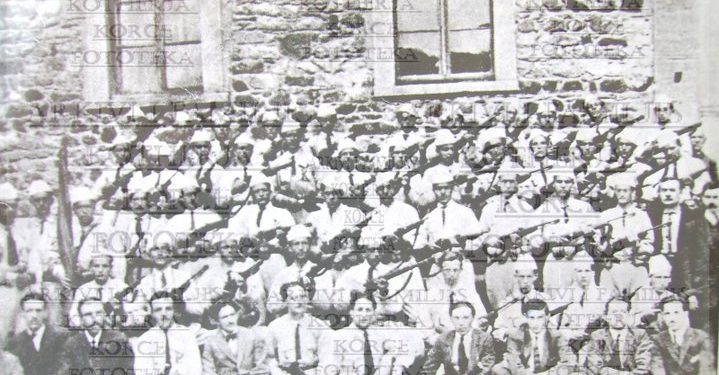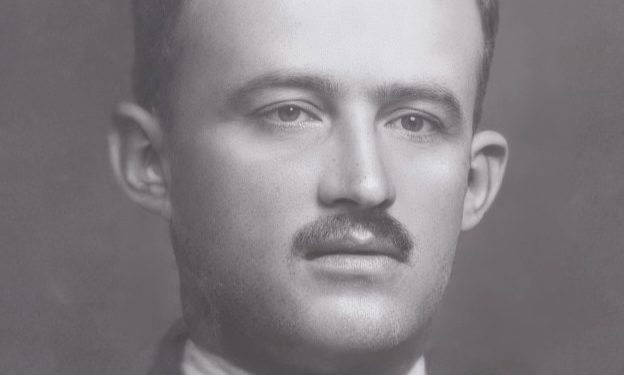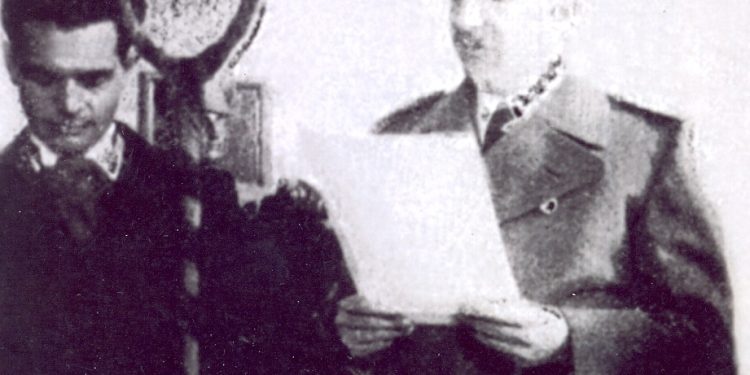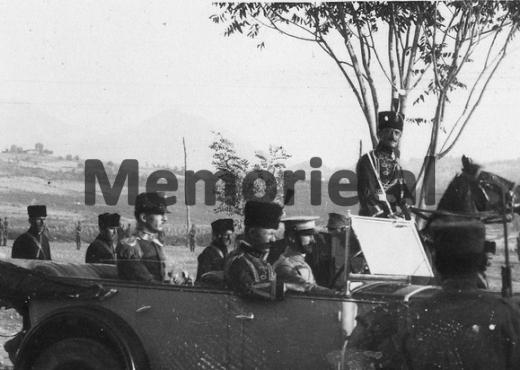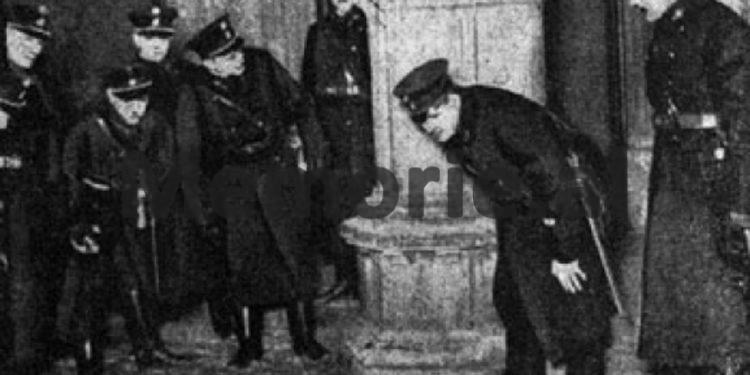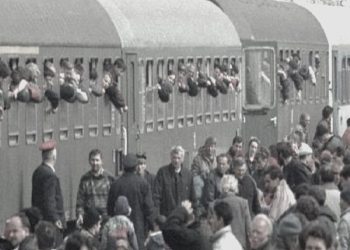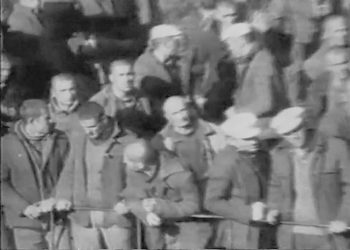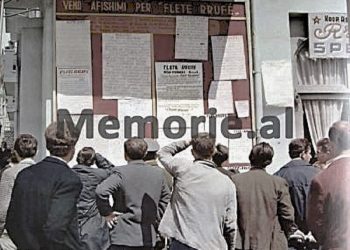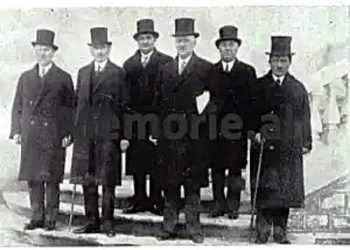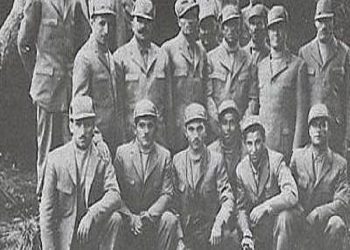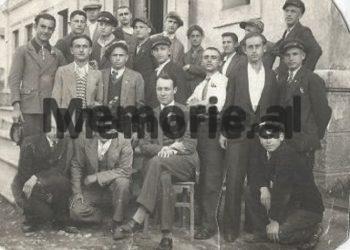By Ilirjan Gjika
Part One
Memorie.al / In the period between the two World Wars, all Balkan countries were characterized by political instability and the struggle for power among different groups. Thus, in Greece, there was a fierce conflict between the Republicans and the Monarchists, which continued for more than a decade. On the other hand, Yugoslavia experienced inter-ethnic clashes between the Serbian group and the Croat-Slovene one. Bulgaria and Romania had confrontations between the left and the right. However, the situation in Albania was slightly different. Following the political instability of the years 1920–1924, during which 12 governments were changed, as well as the June Uprising of 1924, political stability was finally established. It continued throughout the years 1925–1939, a time known in our history as the period of Ahmet Zogu’s political leadership. During this stage, the consolidation of the Albanian state occurred for the first time in its life.
Based on these developments, historians emphasize that, initially as president and later as King, Zogu strived to bring order, peace, and stability to the country. Significant achievements were made in many areas, where the Albanian state had: its own currency, judicial power, contemporary legislation, effective administration, free primary education, free movement within and outside the country, etc.
Moreover, Albania at that time had a Western orientation, guaranteeing the right to life, property, equality before the law, the right to religious belief, etc. Meanwhile, there were also problems such as: the lack of political pluralism, democracy, censorship over the press, or the persecution of opponents of the regime.
However, in the economic aspect, government strategies for genuine economic development were lacking, with some main problems being that of land, grain production, the spread of usury (or loan-sharking), and a general backwardness. Added to these problems was the existence of a political opposition both abroad and within the country. It conducted not only a powerful propaganda against the regime in emigration but also undertook armed actions from time to time.
Such actions included the assassination attempt on Zogu in Vienna (1931), the conspiracy of the “Secret Organization” of Vlora (1931–’32), the “Fier Uprising” (1935), as well as the “Delvinë Movement” of 1937. Nevertheless, none of these actions seriously threatened political stability, although they significantly endangered the regime of the time. Such was the Fier Uprising of August 14, 1935, which was the most serious attempt to overthrow the political regime.
2
In the spring of 1934, the “Secret Organization” was formed in Tirana, establishing its branches in several cities across the country. It represented people with different political backgrounds, who came from various social strata such as: military personnel, former military personnel, civil servants, merchants, large landowners, intellectuals, teachers, young people with revolutionary tendencies, etc. All these people held different political beliefs, such as republican, nationalist, or communist.
A large part of them were people who had been affected by the state reforms undertaken by the Zogu regime and sought its overthrow and the proclamation of the republic. “As president of the new republic (the plotters prepared to eliminate the Monarchy), it was decided to install Nuredin Vlora, a representative of one of the leading Albanian families…” emphasizes Russian historian Nina Smirnova regarding the aims of the “Secret Organization” (Smirnova N., 2004: 185-186).
Meanwhile, the other part of the organization demanded that after seizing power, the King be compelled to proclaim political pluralism and remove Italian influence from Albania. The “Secret Organization” was led by Ali Shefqet Shkupi, a former high-ranking officer who had been discharged, and had decided to execute an uprising based on a coup d’état to be undertaken by segments of the army, which would be combined with rebellious actions by civilian forces.
For this purpose, the organization established its branches in several cities and regions of the country such as: Tirana, Durrës, Shijak, Elbasan, Peqin, Berat, Lushnje, Fier, Mallakastër, and Skrapar. While it was making preparations, the specialized state structures tracked it down, which rushed the organization to launch the uprising prematurely (Belegu M., 1987: pp. 82-85).
In this manner, it did not properly organize the uprising, erupting it only in Fier and Skrapar. But let’s return to Fier, where the local branch of the “Secret Organization” operated. The author Mentar Belegu, in his book “The Anti-Zogist Uprising of Fier,” despite the treatment of this event from a one-sided perspective, characteristic of publications during the communist period, provides us with the following data.
According to him, the Fier group consisted of Hekuran Maneku, Mustafa Kaçaçi, Zenel Hekali, Musa Kranja, Dervish Hekali, Jashar and Namik Cakrani, Abdurrahman Zelka, and Xhevahir Abazi (Belegu M., 1987: pp. 72, 75). But unlike the other branches of the “Secret Organization,” this group got to work, establishing the corresponding structures and recruiting people for the armed uprising (Emiri H., 2001: 165: 168-169).
Based on the work carried out and the good organization, it was the first to start the revolt, giving the signal for the uprising. For this purpose, Wednesday, August 14, was an optimal day, as the local market was held in Fier and the gathering of people would not attract attention.
From the testimonies left by some of the participating protagonists in this event, the uprising was led by Lieutenant Musa Kranja, the Deputy Commander of the Fier gendarmerie. These, along with other detailed data about this event from participants Jakov Milaj, Ramiz Omari, or Xhevahir Abazi (Arapi), are found in the book by Hysen Emiri: “History of Fier,” published in 2001.
According to them, at 2:30 PM, Kranja gathered the people, along with the 11 gendarmes of the Fier post, and opened the military depot of the garrison, distributing the weapons located there. According to the memories of Ramiz Omari, the civilians who came from the villages of Fier and Mallakastër were armed with them (Emir H., 2001: 185-186).
The actions then continued with the arrest of the sub-prefect Hasan Lame, who had just been informed and was preparing to leave to inform Tirana. His arrest was made by Musa Kranja, on the premises of the sub-prefecture building (Emir H, 2001: 168). Citing Dr. Jakov Milaj, H. Emiri writes that; the insurgents took the first measures by declaring a curfew. The exit of cars outside the city was prohibited, and telephone and telegraph connections with other cities were cut off.
Further actions to seize authority included the meeting at the sub-prefecture where the Administrative Commission led by Spiro Papa was created. Ramiz Omari was chosen to head the municipality, and Hekuran Maneku was appointed commander of the place, who created patrols to maintain peace and order. After these actions, the rally began in the square in front of the municipality.
“The administrative commission, Musa Kranja, came out onto the balcony of the municipality, and after him spoke Kost Çekrezi (who had arrived two days earlier with Musai from Tirana), Zenel Hekali, and others,” emphasizes Jakov Milaj regarding this development (Emiri H., 2001: pp. 153-190). Kost Çekrezi informed the participants that Zogu’s power had fallen in Tirana and that the new government had sent him to Fier as its representative.
Meanwhile, at this moment, General Leon De Gilardi, the third figure in the Albanian military hierarchy, arrived in his car. The General happened to be there and stopped the car to see what was happening (Fischer. J. B., p. 255). He was traveling from Berat to Fier, destined for Apollonia, where he was invited by the archaeologist Leon Rey, the head of the French archaeological mission.
“The General was on his way to Apollonia, where I was expecting him for lunch, and I was surprised when I learned the news of the murder the next morning.” Thus writes Leon Rey in his diary about the murder of General Gilardi that day, August 14, 1935 (Rei L, 2012: 98). Accompanied by his driver, the general stopped in front of the crowd, which was excitedly gathered at the demonstration where the uprising and the overthrow of the Monarchy were being proclaimed.
The moment the car stopped, two gendarmes appeared in front of it: Xhevahir Abazi and Myrteza Dajlani. Gilardi, who was the General Inspector of the Army, quickly exchanged words with them, and the moment he started to get out of the car, he was killed by Xhevahir Abazi. This fact was confirmed by the author himself, Xhevahir Abazi, as well as by some of the participants in their memoirs.
“I called on him to surrender, but he did not obey the word and finally told me: ‘I am General Gilardi.’ At the time when he wanted to get out of the left side of the car, he was fatally shot.” This is how Xhevahir Abazi (Spathara) testified to the writer and researcher Hysen Emiri in August 1975, about this event (Emiri H., 2001: 189).
Meanwhile, on the evening of that day, the insurgents, about 200–250 people, after waiting without result for the Vlora insurgents, who were supposed to arrive according to the organization’s plan, marched towards Lushnje. According to the conspiracy, they would meet at its entrance with the other insurgents who would come from Berat and Skrapar.
After arriving there at 10:00 PM, they only met with the Karbunara insurgents, led by Taullah Sinani. Together, after an hour, they attempted to enter Lushnje, but encountered the resistance of the local gendarmerie, which immediately fired upon them (Belegu M., 1987: p. 101). The two sides exchanged fire, which caused no fatalities.
Frustrated by the resistance of the government forces, the insurgents retreated in panic, scattering in the direction of Fier. The withdrawal was made in complete disarray and without the goal of regrouping. According to the memoirs of Xhevahir Abazi (Spathara), the leaders of the uprising returned to Fier.
Here, after changing into civilian clothes, they left for Karavasta, where they found an Italian gasoline station. By deceiving the owner that they would go to Durrës, they went out to the open sea and after a few miles, headed for Italy (Emiri H., 2001: 190).
While Tafil Boletini, who started his duty as sub-prefect in Lushnje the day after the uprising, on August 15, 1935, in his book “Memoirs,” says about Musa Kranja and Kostë Çekrezi: “After getting on, with a pistol in hand, willingly or unwillingly, they force the captain to leave for Italy.” (Boletini T., 2003: p. 412). The group that escaped consisted of Musa Kranja, Kost Çekrezi, and Zenel Hekali, also accompanied by Arshi Shehu and Xhevahir Arapi.
In Karavasta, they boarded the Italian motorship “Due Fratelli,” commanded by Captain Ranjo Nikolo, and through it, they arrived in Bari (Belegu M., p. 118). Here, after staying for three months, they were released, receiving the status of political emigrants. Meanwhile, the news had reached the capital, and the government took quick military measures. Immediately, two battalions from Tirana and Elbasan were sent against the insurgents.
Upon arriving in Lushnje, the military troops saw that the situation was calm, so they marched toward Fier, which was the center of the rebellion. There, these forces arrived on the morning of August 15, without encountering any resistance (Fischer J. Bernd, 2004: p. 255). Meanwhile, the other center of the uprising would be Skrapar, the main protagonist of its leadership becoming Riza Cerova.
After 11 years of political emigration (1924–1935), he would return to Albania on April 6, 1935 (Nishova M., 1971: pp. 90-91). The authorities of the Ministry of Internal Affairs allowed Riza Cerova to settle first in Elbasan and then in Tirana, where he would soon fall into contact with the leaders of the Secret Organization. Initially, it was planned that he would perform some leading functions, but being monitored by the authorities, Cerova would leave to lead this movement in Skrapar. / Memorie.al





